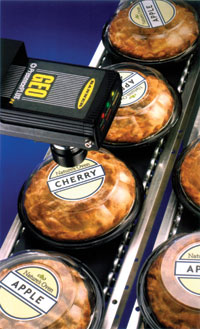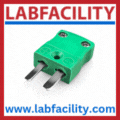
Posted to News on 27th Jul 2015, 00:00
Traceability in the food industry
Traceability has become a crucial part of food production as it is a way of responding to potential risks that can arise in food and feed, to ensure that all food products are safe for people to eat. We spoke to the experts at Turck Banner about the importance of RFID technology and vision technology as enablers for improved traceability throughout the food production logistics chain.

>Traceability, as defined by EU law means "the ability to track any food, feed, food-producing animal or substance that will be used for consumption, through all stages of production, processing and distribution." It is vital that when national authorities or food companies identify a risk they can trace it back to its source in order to swiftly isolate the problem and prevent contaminated products from reaching consumers.
>In addition, traceability allows targeted withdrawals and the provision of accurate information to the public, thereby minimising disruption to trade. Past food crises, such as the dioxin contamination or the much publicised BSE outbreak, have illustrated the particular importance of being able to swiftly identify and isolate unsafe foodstuffs in order to prevent them from reaching the consumer.
>Due to trends for higher HACCP (Hazard Analysis and Critical Control Point) requirements, automated and efficient tractability and traceability of food products are vital. There can be no compromise - traceability is non-negotiable.
>There are many devices on the market that provide food companies with complete inspection capabilities throughout all stages of manufacturing, including label verification, date and lot codes, RFID (radio frequency identification) and bar code reading. Banner Engineering offers an extensive range of vision sensors that ensure accurate barcode reads as well as providing reliable solutions for sortation system item detection. Standard and high resolution grey scale, colour, single and multi-purpose vision sensors are available. Banner, in conjunction with Turck Banner in the UK, works extensively with food manufacturers and machine builders to provide the best possible solutions, enabling fast, efficient and safe processes.
>Much has been written about RFID and it is a technology that is constantly being refined and updated. There are literally thousands of applications utilising RFID in our everyday lives. When out shopping we are all familiar with electronic surveillance tags on goods. These are generally a 1-bit tag that is either on or off. On payment for the item the bit is turned off but if someone tries to take it out of the store without paying, readers at the door detect the tag and sound an alarm. RFID is also used extensively in automated warehousing to facilitate the correct selection and dispatch of goods.
>Whilst all these applications are important to ensure we receive the correct goods at the correct time or that we have peace of mind because of enhanced security measures, they are of little consequence when compared to food safety. To receive an incorrect or late delivery of an item is annoying but to suffer ill health due to poorly stored or transported food in the supply chain, can be devastating, both for the consumer and the supplier responsible.
>RFID technology is widely used in the food industry in supply chain management, RFID tags are used to track food products during distribution and storage. Special sensor RFID tags can monitor various environmental parameters such as temperature and relative humidity during product transportation and storage. This critical data verifies that products have not been exposed to conditions that compromise quality and safety. There are currently more than thirty different sectors in the food industry, and one of the largest, second only to bakery, is meat processing, where the use of RFID technology is prolific. The so-called farm-to-fork process has many different stages, each one presenting a potential for error unless carefully monitored.
>Tagging live animals to ensure traceability back to the producing farm has been in place for many years, particularly in the wake of widespread bovine disease outbreaks. At the abattoirs tagging continues after slaughter as each carcass is weighed and cross-matched with a number of trays, each with their own unique RFID tag. Individual butchers then prepare the various joints of meat and place them on the trays. At the end of this process every single part of the carcass, including the bones, is weighed separately and compared to the weight of the original carcass before passing through to the packaging stage. Whilst food safety is paramount in this process RFID technology also provides valuable commercial data which can improve efficiency, reduce waste and increase profit.
>Successful traceability necessitates the generation of an enormous amount of data. The gathering of this data, particularly in large scale processing plants, agricultural units or anywhere with remote, widespread operations, can often be difficult and costly. Wireless engineering, such as Banner's SureCross range eliminates the need for expensive and time-consuming cable installations. The system is easy to apply and use yet is highly expandable, meeting the most common communication needs including, discrete, analogue, serial and Ethernet signals.
>The demand for increased production is a common cry throughout industry as a whole. However, those involved in the food industry have the added challenge of traceability as they strive to meet this demand in a safe and reliable way.


